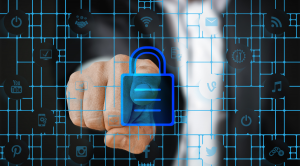Steps to train employees on cybersecurity
The Insider Threat: Why Cybersecurity Training is a Must
Many data breaches are caused by simple employee oversight. A click on a malicious link or sending information over an unsecured connection can quickly turn into a disaster: systems are paralyzed, customer data is leaked on the Dark Web, and organizations are forced to face the intervention of authorities.
The good news is that these scenarios are completely preventable. When employees are equipped with the right knowledge and the right cybersecurity tools, they become the first line of defense against digital threats.
It is alarming that nearly 1/3 of businesses in the US have not implemented any form of cybersecurity training for employees. In fact, more than 50% of small and medium-sized businesses do not have a specific security plan.
Don't let your organization become the next victim. Be proactive in building a cybersecurity awareness training program that helps employees identify, respond to, and handle risks effectively.
In this article, we’ll walk you through implementing a comprehensive cybersecurity training program in 10 simple steps. Let’s get started.
Step 1: Help employees understand their role in cybersecurity
Ensure that all employees – from executives to new hires – are aware of their roles and responsibilities in keeping the network secure. Even a single careless action, such as clicking on a malicious link or sharing information improperly, can lead to serious consequences such as data breaches or legal violations.
Provide specific guidance on how to comply with security procedures. For example, mandate VPNs and secure access for remote workers. Also, create an environment where employees are encouraged to report incidents – emphasizing that accidental breaches and speaking up in a timely manner are positive, not mistakes to be covered up.
Step 2: Create a clear and easy-to-implement privacy policy
Training should be based on specific security policies that are easy to understand and implement. Create detailed rules regarding password management, handling sensitive data, incident response, and remote working.
However, simply providing a policy document is not enough. Businesses need to hold regular discussions and annual knowledge checks to ensure that everyone is aware of the principles. Policies must be integrated into daily work processes, not just on paper. Keep policy documents in an accessible place, use friendly language, and avoid overly technical terms that employees find difficult to access.
Step 3: Equip employees with the skills to recognize and respond to threats
The goal of training is not to turn employees into security experts, but to help them recognize common risks and know how to respond appropriately.
Learn how to recognize phishing emails, fake links, the dangers of installing unauthorized software, or using unsafe public Wi-Fi. Provide real-life scenarios such as warnings about unusually slow devices, strange advertising windows, or hidden browser extensions – all of which can be signs of a cyber attack.
Emphasize that every employee is an important link in the defense system. When properly trained, they become a “human firewall” – a key factor in detecting and preventing incidents before they become serious.
Gartner's Cybersecurity Trends 2024 report also recommends this model: not only relying on technology, but also changing human awareness and behavior to build a comprehensive security system. When everyone participates, businesses will be better able to resist constantly changing threats.
Step 4: Strengthen internal password management and protection
Weak or reused passwords are one of the biggest vulnerabilities that make businesses vulnerable to cyberattacks. A strict and smart password policy is the first line of defense against security threats.
Don't assume everyone understands the dangers of using weak passwords. In fact, most users have the habit of reusing passwords for multiple accounts, and this is the main cause of more than 80% of data breaches. The "just being able to log in is enough" mentality causes many employees to ignore this important protection step.
Instead of letting each person set their own password, businesses can apply a policy of creating and issuing strong passwords, then requiring periodic changes. Along with that, train employees to create secure passwords - including special characters, minimum length, and avoiding easily guessable information such as birth dates or names.
Additionally, implement multi-factor authentication (MFA) for all network access. Train employees on how to use it properly to add an extra layer of protection. A combination of strong policies and proper awareness will help organizations minimize the risk of information leakage from within.
Step 5: Strengthen security for work devices
Cybersecurity training for employees cannot ignore the element of device security – especially in the context of increasingly popular remote working. Personal and mobile devices are often used to access sensitive data or internal systems, so specific policies are needed to control risks.
Businesses should require a clear separation between personal and work devices, especially when assessing high security risks. At the same time, the training program should include content explaining the difference between personal and business use of devices.
In addition, physical security and remote connectivity are also factors that need to be emphasized. Employees should be guided on the use of security tools such as remote monitoring software, and need to understand that corporate accounts are always controlled to ensure transparency and security.
Step 6: Encourage Regular Data Backups
Backing up critical data is not just a personal responsibility, it is an essential requirement for ensuring information security for the business. Employees should be required to back up data regularly – ideally daily – and avoid storing data locally on personal devices altogether.
Since devices can be stolen or infected with malware, use encrypted cloud storage solutions to optimally protect customer data and internal documents.
Step 7: Strict Authentication and Access Management
A rigorous authentication and authorization system should be implemented to limit insider risks. All employees should be clearly instructed on the access rights appropriate to their role. Sharing devices, writing down passwords, or installing new devices without approval should be strictly prohibited.
While some employees may find authentication systems like MFA or VPNs annoying, understanding the potential threats makes them more likely to accept and comply with the process.
Step 8: Securely Develop and Update Websites
Web programming vulnerabilities – such as SQL injections or application exploits – are a constant threat. Therefore, all employees involved in developing or updating web content should be trained in basic security principles.
Even those who do not directly write code should understand how to update information securely. Clearly defining who has the authority to change content or source code is essential to avoid information leaks or malicious code insertion.
Step 9: Raise awareness of safe email usage
Email is the most common gateway for hackers to spread malware and phishing attacks. Therefore, training employees to recognize suspicious emails, dangerous links, and fake content is extremely important.
Businesses can conduct simulated phishing email campaigns to test employees' security reflexes. In cases where email is used to send sensitive information, require the use of VPN and content encryption to ensure maximum security.
In addition, it is necessary to emphasize the concept of “sensitive data” and ensure that employees are not allowed to use personal emails to transmit this information.
Step 10: Maintain regular training and update knowledge
Cybersecurity awareness can decline rapidly if not reinforced regularly. Few employees retain the content of a training course after a few months, leading to them reverting to unsafe habits like using weak passwords or skipping secure connections.
Conducting regular training sessions doesn’t have to be expensive. Many free or low-cost courses from reputable organizations can save businesses significant money.
Some helpful resources:
Cisco Networking Academy: Free 6-hour cybersecurity course.
Evolve Academy: Offers free hands-on training.
Microsoft Technologies Training: In-depth security courses for Microsoft product users.
In addition, businesses can combine internal training with podcasts, articles, or webinars to maintain ongoing awareness.
Businesses don’t have to be alone in implementing a cybersecurity awareness training program. Don’t feel like you have to do it all on your own — instead, partner with trusted partners like VPNRice to build a solid knowledge base and upskill your employees.
VPNRice is more than just a secure connectivity tool; it’s also a useful resource to help businesses on their data protection journey. Our Resource Center offers easy-to-understand documentation, security checklists, and step-by-step guides to help both administrators and employees grasp core cybersecurity concepts.
In particular, you can find visual tutorials on VPNRice’s official YouTube channel — covering everything from basic to advanced topics like protecting personal devices, using VPNs properly, and ensuring secure remote access. It’s an effective learning resource that’s perfect for supplementing internal training sessions.
Cybersecurity is a shared responsibility — and you don’t have to face it alone. Let VPNRice help you train and build a more secure network environment. If you need further assistance or want to design a solution that is right for your organization, please do not hesitate to contact us.










